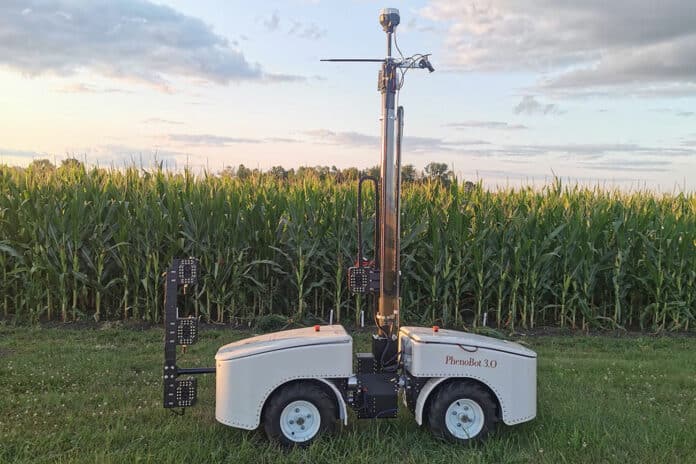With the ever-increasing world population and climate change, improving plant productivity and efficiency has become an important mission of plant breeding. Understanding the adaptation of plants to various environments can potentially aid in developing productive crop varieties and accelerate plant breeding progress.
Maize is one of the three major cereal crops in the world. To see how efficient the plant is at performing photosynthesis, you need to check the angle of its leaves relative to its stem. Conventional methods for measuring leaf angles involve measuring leaves by hand with a protractor – which is both time-consuming and labor-intensive.
To automate this process, a team of researchers from North Carolina State University and Iowa State University has developed a new robotic system that can accurately measure the angle of leaves on corn plants in the field. This technology makes data collection on leaf angles significantly more efficient than conventional techniques, providing plant breeders with useful data more quickly.
“In corn, you want leaves at the top that are relatively vertical but leaves further down the stalk that is more horizontal. This allows the plant to harvest more sunlight. Researchers who focus on plant breeding monitor this sort of plant architecture because it informs their work” says Lirong Xiang, first author of a paper on the work and an assistant professor of biological and agricultural engineering at NC State.
The new AngleNet system combines an existing PhenoBot 3.0, a wheeled agriculture robot designed to traverse between pairs of agronomically spaced rows of crops, with special machine-learning-based software. The device is steered manually and is narrow enough to navigate between crop rows that are spaced 30 inches apart – the standard width used by farmers.
The PhenoBot 3.0 is equipped with four tiers of PhenoStereo cameras to capture side-view and close-range stereo images of maize plants in the field. Each tier is set to a different height to capture a different level of leaves on the surrounding plants and includes two cameras. This allows it to capture a stereoscopic view of the leaves and enable 3D modeling of plants.
The captured stereoscopic images – at multiple heights, of every plant that it passes – are then fed to a software program. The software combines those images and computes the leaf angle for the leaves of each plant at different heights.
“For plant breeders, it’s important to know not only what the leaf angle is but how far those leaves are above the ground,” Xiang says. “This gives them the information they need to assess the leaf angle distribution for each row of plants. This, in turn, can help them identify genetic lines that have desirable traits – or undesirable traits.”
To test the technology, the researchers compared leaf angle measurements done by the AngleNet robot in a cornfield to leaf angle measurements made by hand using conventional techniques. They found that the angles measured by AngleNet were within 5 degrees of the angles measured by hand. According to researchers, this amount is well within the accepted margin of error for purposes of plant breeding.
“We’re already working with some crop scientists to make use of this technology, and we’re optimistic that more researchers will be interested in adopting the technology to inform their work. Ultimately, our goal is to help expedite plant breeding research that will improve crop yield,” Xiang says.
Journal reference:
- Lirong Xiang, Jingyao Gai, Yin Bao, Jianming Yu, Patrick S. Schnable, Lie Tang. Field-based robotic leaf angle detection and characterization of maize plants using stereo vision and deep convolutional neural networks. Journal of Field Robotics, 2023; DOI: 10.1002/rob.22166
